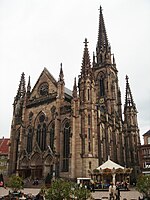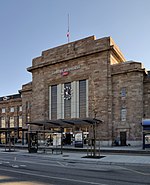Musée des Beaux-Arts de Mulhouse
Art museums and galleries in FranceMulhouseMuseums established in 1864Museums in Haut-Rhin

The Musée des Beaux-Arts de Mulhouse is a municipal art museum in Mulhouse, France. It originated with the Société industrielle de Mulhouse (SIM), a learned society established in 1826 by local industrialists such as Dollfus, Koechlin, and Schlumberger, which had begun collecting artworks in 1831, and was founded in 1864 by Frédéric Engel-Dollfus.
Excerpt from the Wikipedia article Musée des Beaux-Arts de Mulhouse (License: CC BY-SA 3.0, Authors, Images).Musée des Beaux-Arts de Mulhouse
Rue Guillaume Tell, Mulhouse
Geographical coordinates (GPS) Address External links Nearby Places Show on map
Geographical coordinates (GPS)
| Latitude | Longitude |
|---|---|
| N 47.745833333333 ° | E 7.3384722222222 ° |
Address
Musée des Beaux-Arts de Mulhouse
Rue Guillaume Tell
68100 Mulhouse
Grand Est, France
Open on Google Maps









